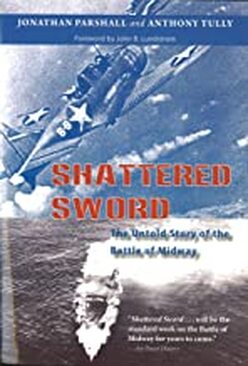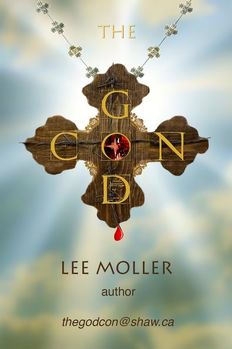 I reaOne description of the Battle of Midway is this: Up until about 10AM local time, Jun 4th, 1942, the Japanese were winning the Pacific war. Six minutes later, three Japanese carriers were afire; the fourth would join them shortly; and the tide of the war would change. For the record, the aircraft carriers in the BoM were Akagi, Hiru, Soryu and Kaga for Japan, and Yorktown, Hornet and Enterprise for the Americans. Most scholars view Midway as a fourth carrier in the battle. The most precious resources were flight decks, so that makes sense. Technically, the Japanese were losing the war the moment they started it. Japan is resource poor. Oil, iron etc. all had to be shipped in. The following statement is telling: The Japanese had four to six fleet carriers and a handful of escort carriers when the BoM was fought. They had zero new carriers in the pipeline for the next year. The Americans had three carriers in the Pacific and twelve in the pipeline… one new fleet carrier every month! This was a most interesting book. I will not review the contents in detail, as they were already described in Miracle at Midway (REF) by Prange which I have summarized elsewhere. This book was written by American authors who wrote it from the Japanese point of view. Careful review of Japanese battle records allow them to dispel a number of myths that have survived the decades since the war. Most of the myths came from a Japanese author who was there: Cdr. Mitsuo Fuchida. He led the attack on Pearl Harbor and wrote "the" book on Midway in1955 called Midway, The Battle that Doomed Japan. He had an agenda and he lied. He tried to suggest that if the events at Midway were timed just a little bit different, the Japanese might have won. He was wrong. One fact I found interesting was this: The Akagi (Nagumo's flagship) was almost hit by a bomb just off the fantail. The shock of the explosion jammed the ships two enormous rudders, sealing its long term fate. This is eerily similar to the fate of the Bismark. After the BoM, all four Japanese carriers were ablaze. None would sink as a direct result of American attacks. Rather, their burnt out hulls were sunk by Japanese torpedoes. The scale of the Japanese operation was huge. It would consume an entire year's worth of operational consumables like fuel. The Japanese were ahead of the Americans in multiple-carrier tactics and it showed. The first three groups from Yorktown, Enterprise and Hornet arrived at different times. Had they been properly coordinated, the battle would have been won on first contact. Admiral Nagumo, who led the Pearl Harbor attack, commanded the Midway forces. He did not know about the Americans carriers until it was too late. The task for Nagumo was to prepare Midway for Yamamoto's invasion fleet following a day behind. One of the myths exploded in the book is Nagumo's decision making errors with respect to arming planes for land attacks (bombs) or sea attacks (torpedoes). But first, a word about "spotting". "Spotting" is the term given to the on deck flight preparations just before launch. Japanese planes used rotary engines that needed to be warmed up for some time. A deck officer fires up the plane and checks all of its systems before launch. All other activities were generally done below deck, including fueling and arming. Having armed and fueled planes below decks is not a good idea, as time would tell. The way the Japanese prepped planes had a number of bottle necks, including access to the hoists that raised ammo up to the airplane decks and, more importantly, ammo carts. The lack of ammo carts would become a major issue. Thousand pound bombs and two thousand pound torpedoes need carts to transport them to their planes. They also require special mounting brackets for each. The carts became an especially scarce commodity when a plane's armament had to changed, which required two carts. It is not clear why these carts were so hard to come by. When the fighting got tough, the Japanese also had to stow ammunition to one side, rather than returning them immediately to the ammo storage areas below the water line. Pilot Jimmy Thach became famous during the B0M and his name is given to an air tactic that threw the Japanese CAP fighters into chaos. The Zero was the best fighter in the world at the time. It was, maneuverable, well armed and had superior rates of climbing and turning. It also had a bad radio. However, the US Wildcat was tough. The pilot was well protected and the gas tanks were self sealing. The Thach Weave worked like this. A lead US plane and his wing man (above him, behind, and to the right) would draw a Zero in to attack. It would naturally go for the trailing wing man first. The wing man's tough Wildcat sucks up the hits and splits to the right. The lead plane splits left and, in a coordinated move, they each reverse course: lead to the right, wing to the left. This brings the attacking Zero under the guns of the lead pilot. This was the first time these Japanese pilots had been stared down and shot up! They were baffled. The Thach Weave went on to be used to good effect at Guadalcanal. The book's research is used to explode several myths about the BoM. Midway was won largely by code-breaking, a measure of luck, and Japanese arrogance sometimes called "victory disease". Both sides were happy with the myths: The Americans overcoming the odds and the Japanese being unlucky. Neither is true. When the Japanese were war gaming the attack, young officers who posited dispositions of the Americans that did not fit with their assumptions (i.e.: the Americans were all but beaten already) were belittled for going against doctrine. This completely defeated the purpose of war gaming. Of course, those officers turned out to be right. Ironically, one of Japan's major doctrines was to always hit the enemy as hard as possible the first time. I.e.: throw everything at them at once; overwhelm their defenses and crush them. Instead, the fleet sailed leaving two carriers behind in Japan; and Nagumo was ordered to hold back a reserve when they launched against Midway. While not really punched hard in the book, the American carriers were simply better ships. And they had radar: an enormous advantage. Most Japanese carriers were built on the hulls of other ships and had a kind of Rube Goldberg,/Mechano-Set look to them that gave away their Achilles heel: light armor. American carriers were purpose built and where considerably better engineered, especially when it came to damage control. Many US systems had redundant backups, and the US deck crews were in the habit of draining fuel lines when not in use. The Japanese saw damage control as a specialists job. The Americans made sure every crewman was well versed in basic damage control tactics. These differences would make themselves known in the battle. Another interesting difference between the Americans and the Japanese was the set up of command and control. The Japanese's bridges were very small cramped affairs with very few people on hand. The bridge of a US carrier was huge by comparison. The Americans introduced the concept of a Combat Information Center to coordinate information flow. The Japanese had nothing of the sort at the time. I really liked this book. It was much more analytical than previous histories of the events and will stand as the new bible on the subject for some time to some. Many interesting photos and detailed descriptions of carrier tactics and practices. Here is a recap of the myths discussed in the book:
0 Comments
|
AuthorLee Moller is a life-long skeptic and atheist and the author of The God Con. Archives
May 2024
Categories
All
|

 RSS Feed
RSS Feed